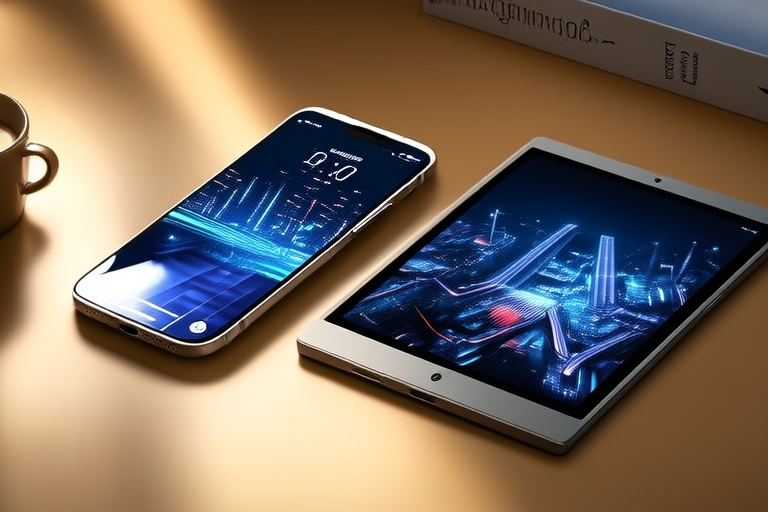“`html
The Future of Mobile: How Smartphones and Tablets are Evolving
Introduction
Smartphones and tablets have become indispensable tools in our daily lives, revolutionizing communication, entertainment, and productivity. These devices have evolved from simple gadgets into powerful computing platforms that shape the way we interact with the world. As technology continues to advance, the future of mobile devices promises even greater innovation, offering users enhanced performance, improved user experiences, and expanded capabilities.
The evolution of mobile technology is not just significant for individual users but also for entire industries. From healthcare to education, finance to entertainment, mobile devices play a pivotal role in driving progress and efficiency. This article explores the various aspects of this evolution, from hardware advancements to software innovations, connectivity improvements, and emerging technologies. We’ll also consider the environmental and sustainability challenges that come with these rapid changes.
Advances in Hardware
One of the most exciting areas of advancement in mobile technology is hardware. Processors have become faster and more power-efficient, enabling smoother multitasking and more demanding applications. The latest generation of CPUs and GPUs are designed to handle complex tasks, such as gaming, video editing, and artificial intelligence, without draining the battery. For instance, the Apple M1 chip and Qualcomm Snapdragon 8 Gen 2 are setting new benchmarks in performance and efficiency.
Display technology has also seen significant improvements, with the widespread adoption of OLED screens providing deeper blacks, richer colors, and higher contrast ratios. Foldable and rollable displays are pushing the boundaries of form factors, allowing for larger screens in compact devices. These innovations offer users more flexibility and immersive experiences. Additionally, advancements in battery technology, such as wireless charging and fast-charging solutions, are addressing one of the most pressing concerns for mobile users: battery life.
Software and User Experience
The role of operating systems in shaping the user experience cannot be overstated. Future developments in operating systems will focus on improving performance, security, and ease of use. Android and iOS, the two dominant mobile operating systems, are continuously evolving to meet user needs and expectations. New versions will feature enhanced user interfaces, intuitive navigation, and seamless integration with other devices.
Innovations in user interface and interaction are transforming how we engage with our devices. Voice commands and augmented reality (AR) are becoming increasingly prevalent, offering hands-free control and immersive experiences. Privacy and security features are also being prioritized, with biometric authentication, advanced encryption, and secure data storage solutions ensuring that users’ information remains protected. As cyber threats grow more sophisticated, so too must the defenses built into mobile operating systems.
Connectivity and Internet of Things (IoT)
The advent of 5G and future networks is poised to revolutionize mobile connectivity, offering faster speeds, lower latency, and greater reliability. These advancements will enable real-time interactions, seamless streaming, and efficient data transfer, making mobile devices more responsive and capable. 5G networks are already beginning to roll out globally, promising to unlock new possibilities for mobile applications.
Integration with IoT devices will make smartphones and tablets central hubs for smart homes and cities. Users will be able to control lighting, temperature, security systems, and other smart appliances through their mobile devices. Edge computing and cloud services will enhance mobile capabilities by offloading processing tasks to nearby servers, ensuring faster response times and reduced data usage. This interconnected ecosystem will transform how we live and work, creating smarter, more efficient environments.
Emerging Technologies
Trends like foldable and rollable displays, modular phones, and flexible batteries are pushing the boundaries of mobile design. These innovations promise to deliver devices that are both versatile and durable, catering to diverse user needs. Foldable displays, for example, allow users to switch between a tablet-like experience and a smartphone-sized device with ease. Modular phones, on the other hand, enable users to customize their devices by swapping out components, extending their lifespan and reducing e-waste.
The potential of wearable tech, such as smartwatches and fitness trackers, is vast. These devices are increasingly integrating with smartphones and tablets, offering seamless synchronization and enhanced functionality. Advancements in artificial intelligence and machine learning are also transforming mobile devices, enabling personalized experiences, predictive analytics, and intelligent assistants that anticipate user needs. These technologies will continue to evolve, making mobile devices smarter and more intuitive.
Environmental and Sustainability Considerations
The environmental impact of mobile device production and disposal is a growing concern. The extraction of raw materials, manufacturing processes, and electronic waste contribute significantly to carbon emissions and pollution. To address these issues, manufacturers are increasingly adopting sustainable practices, such as using recycled materials, designing energy-efficient products, and implementing recycling programs.
Software updates and longevity play a crucial role in reducing electronic waste. Regular updates ensure that devices remain relevant and functional for longer periods, encouraging users to keep their devices rather than replace them frequently. Manufacturers are also focusing on creating more durable and repairable devices, further extending their useful life. By prioritizing sustainability, the mobile industry can help mitigate its environmental footprint and promote responsible consumption.
Conclusion
The future of mobile technology holds immense promise, with advancements in hardware, software, and connectivity set to redefine how we interact with the digital world. Faster processors, improved displays, and enhanced battery life will provide users with more powerful and efficient devices. Innovations in user experience, privacy, and security will ensure that these devices remain safe and enjoyable to use. The integration of mobile devices with IoT and the rise of emerging technologies will create smarter, more connected environments.
However, the environmental impact of mobile technology cannot be overlooked. Efforts to create more sustainable products and extend device lifespans are crucial for reducing electronic waste and promoting responsible consumption. As we move forward, the broader implications of these evolutions will shape society, business, and personal life, ushering in a new era of technological advancement.
“`


